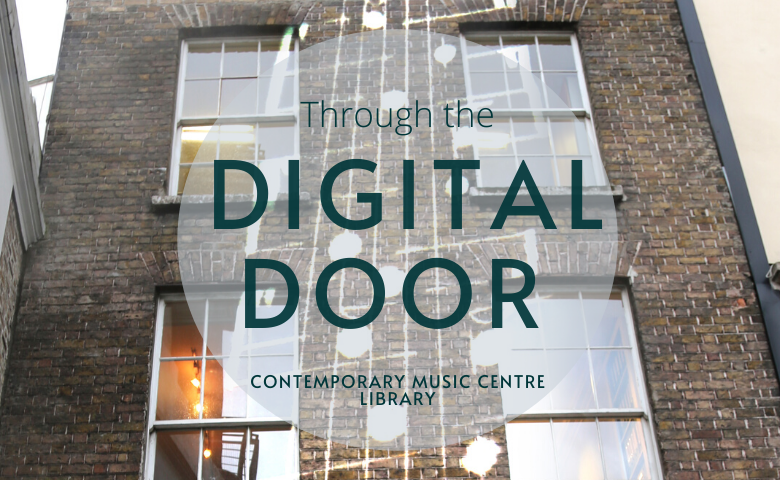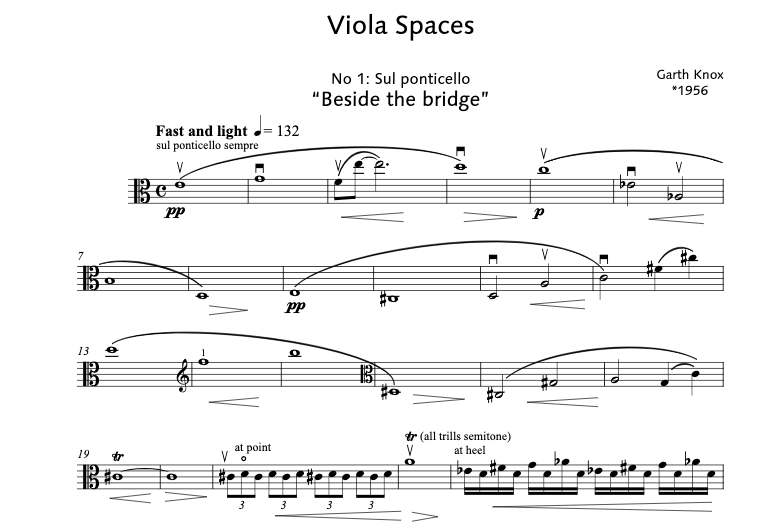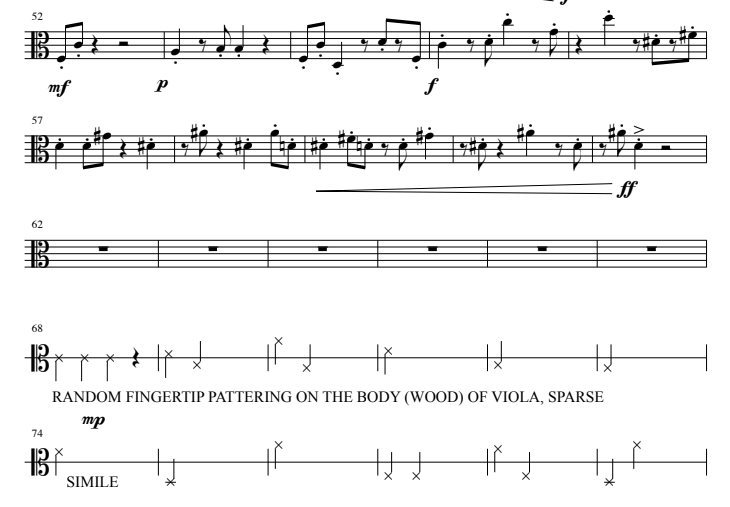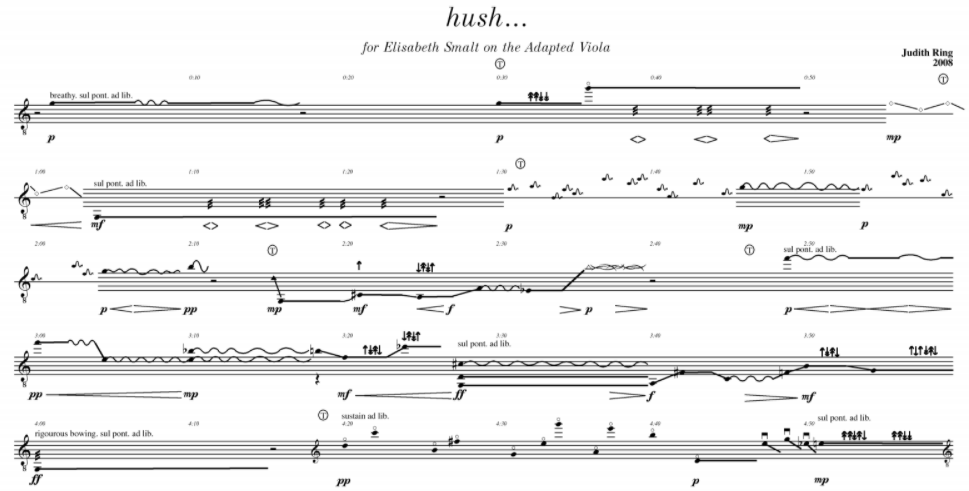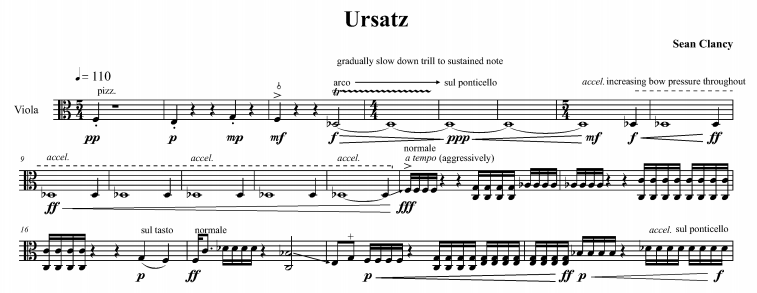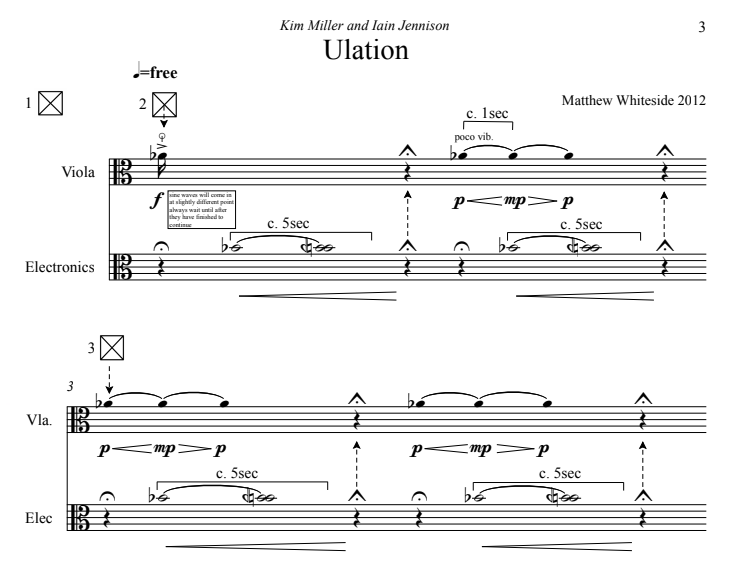Through the Digital Door: Viola works in CMC's Library
This week, Through the Digital Door focuses on music for viola. There are over forty works for solo viola, viola and electronics and viola and tape in Contemporary Music Centre's Library, and a selection of six is highlighted in this feature.
As CMC's building on 19 Fishamble Street is still closed to the public, all enquiries and research queries can be emailed to CMC's Library Co-ordinator Susan Brodigan sbrodigan@cmc.ie
Garth Knox: Viola Spaces (2009) 28'
This work was written by composer and violist Garth Knox as a series of studies for viola. These studies explore the extended techniques which are seen in the extreme diversity of new music today and aims to make these techniques accessible to advanced players. This work is published by Schott.
Each piece (or "space") concentrates on one specific technique, and exists in a solo version, and in a duo or trio version, the other viola parts using the same techniques, but in a simpler way. In this way, a player can learn the technique on the simpler part, then progress to playing the solo part himself.
Linda Buckley: do you remember the planets? for viola and tape (2004) 7'
This work was premiered by Karen Dervan in the Project Arts Centre, Dublin, and was partly inspired by Pythagoras and his theory of the ‘music of the spheres’.
Pythagoras developed the theory that the distances between the planets would have been the same ratios as produced harmonious sounds in a plucked string. He believed that the solar system consisted of ten spheres revolving in circles, with each sphere producing a sound as it moved through the air. It was thought that the closer spheres produced lower tones while the farther moved faster and produced higher-pitched sounds. All combined into a beautiful harmony, the music of the spheres.
Do you remember the planets? makes much use of intervals of the fourth and fifth, played by stopped strings. These ‘harmonious’ intervals are explored in contrasting ways - in a raw, visceral manner using distorted electronic manipulations and in a ‘pure’ almost austere way with ethereal harmonics.
Jonathan Nangle: crowned with a halo of gold and decorated with white flowers (2016) 6'
This work was dedicated to and premiered by Sebastian Adams in dlr LexIcon in May 2016. Sebastian Adams was the dlr LexIcon's Musician in Residence in 2016, and this work was included in a recital of new viola works written for Sebastian Adams.
Judith Ring: Hush... (2008) 7'
Hush... was premiered by Elisabeth Smalt of Scordatura Trio for adapted viola, an instrument invented by Harry Partch.
It provides the performer with an extended range due to its lengthened neck. This enables microtonal pitches to be produced more effectively. I worked closely with Elisabeth on recordings of the viola and constructed a delicate tape part to accompany her in performance.
Seán Clancy: Ursatz from Music by Numbers (2010) 4'
This work was premiered by Garth Knox in Birmingham Conservatoire.
Howard Skempton once suggested to me, that working with musical material over an extended period of time, is a lot like being in a relationship; in that, the more one gets to know one's partner, the more things one discovers about them (hopefully this makes us appreciate them more; however, it can, of course, go the other way!) Similarly, working with musical material over an extended period of time, can lead us to discover things that both interest us, and that we like, and of course things that dissatisfy us. This piece for solo viola comes from a series of pieces in which the same musical material is used; however, it is treated in very different fashions depending on the medium employed (mainly timbral issues). Like Howard suggested, I have discovered new things about the (quite simple) material. Indeed, I am finding things that I like, and things that I don’t like. The challenge is to create a balance between that which is satisfying, and that which is undesirable, whilst remaining faithful to the *geist* of the fabric. This piece, then, is a representation of the material in its most basic form, or at its (tongue firmly in cheek) Ursatz.
Matthew Whiteside: Ulation for viola and electronics (2012) 7'
This work is written for viola and electronics via a Max MSP patch, where the electronic part acts as a second instrument to listen to and to change the sound of the viola. This is done through intentional glitches and samples triggered when certain notes or gestures are hit, which the player then reacts to.
My overall aim for music involving electronics is for the player to have no need to tell the computer through any other way than playing where they are in the piece; the computer just follows like a normal player. Ulation is a step toward this where the computer reacts to the viola within certain constrains.

